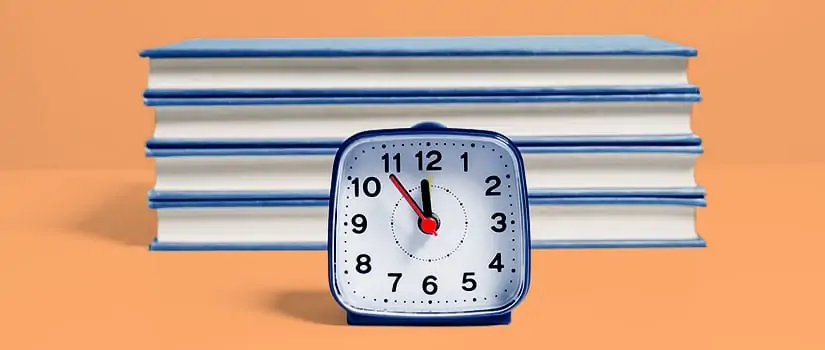Let’s be real for a second: everyone procrastinates. It’s a bad habit that affects everyone from teenaged students to business big-shots (whether they admit it or not). Putting off that one research paper until a more convenient time isn’t a big deal—until it snowballs into every assignment and you end up stressed out with two hours until the deadline.
If you’ve been putting off breaking this habit, we’ve got a step-by-step strategy to help you let go of procrastination once and for all!
Turn in you best essay with a paper check from Citation Machine Plus. It will look at your writing for spelling, subject-verb agreement, punctuation, word choice, and more. Any areas that may need to be edited will be flagged for your review. Check it out today!
Step 1: Make a list of priorities
When you’ve been procrastinating for a while, the work tends to pile up. This can make it intimidating to even think about digging yourself out! To get started, sit down and make a list of everything you need to get done. If you’re also behind on personal or household-type things, make a list for that too, but separate it from your work one (because cleaning the bathroom is never quite so appealing as when it’s a viable alternative to writing an essay or annotated bibliography!).
Add in any due dates, then take a look at the list and rank the projects in order of priority. Projects with fixed deadlines are the easiest to rank, but what about open-ended or ongoing work? Consider how long each one takes, and try tackling the shorter work first: finishing something can give you a sense of accomplishment that will buoy you through the next thing!
Step 2: Turn off distractions
Procrastinating doesn’t always happen intentionally—sometimes you just get caught up in a podcast or listening to music and the next thing you know, two hours have passed. Before you get started on your work, remove distractions.
This can mean a whole bunch of different things. It can mean moving to an environment that’s more study-oriented in your mind (i.e., the library or a desk). It also just might mean shutting off distracting things: turning off social media notifications on your phone, closing the TV streaming tab on your computer, and avoiding music with lyrics.
Step 3: Break projects into manageable chunks
It can seem like the work is endless when you have long papers or projects to work on. This frustration is one of the biggest factors leading to procrastination. You know yourself better than anyone, so take a moment to honestly consider what’s making you procrastinate. Are you overwhelmed by the amount of work? Secretly afraid that you don’t have enough knowledge? Just plain unenthusiastic about the topic? All these things can be addressed by taking your projects one step at a time.
Instead of giving up because the project is taking so long, break it up into smaller milestones that you can achieve one at a time. By doing this, you’ll feel like you’ve accomplished something every time you get past one of those milestones. They can be something as simple as “create essay outline” and “create MLA works cited page,” or something more specific like “finish first five slides of the presentation.”
The fun part of this? You get to reward yourself each time you finish a piece. Make sure that these rewards are fun, but not a new distraction. So if your reward is a five-minute music break, make sure that you set a timer so that you don’t get caught up in a new procrastination cycle.
Step 4: Check off your list—but keep it updated
There’s something incredibly satisfying about the moment you get to take a pen and slash through something on your to-do list. The organization of your list will help you stay on track without letting anything slip through the cracks. Getting into the habit of accomplishing things is a great antidote to keep you from slipping back into bad habits and procrastination.
However, make sure you keep your to-do list updated as new assignments come in! The first time you organize your tasks, it can feel like a fresh new beginning, but that enthusiasm will probably wear off as it becomes part of your normal routine. When this starts to happen, try to remember how stressful it was before you started these habits. Each time a new assignment pops up, put it on your list, along with any deadlines or similar info. If you’re the visual type, you can make this a little more personal by using pretty pens or a color-coded spreadsheet—figure out what works best for you! And really, that’s the true secret to breaking up with procrastination: pinpoint what’s likely to stop you from getting your work done, and address those specifics head-on.
One thing you don’t have to procrastinate on? Making citations! Citation Machine helps you easily and quickly cite sources in APA, MLA, Chicago style format, and thousands of other styles. Struggling with writing? Read Citation Machine’s grammar guides and learn about the basic parts of speech in English.
Under Student Life
